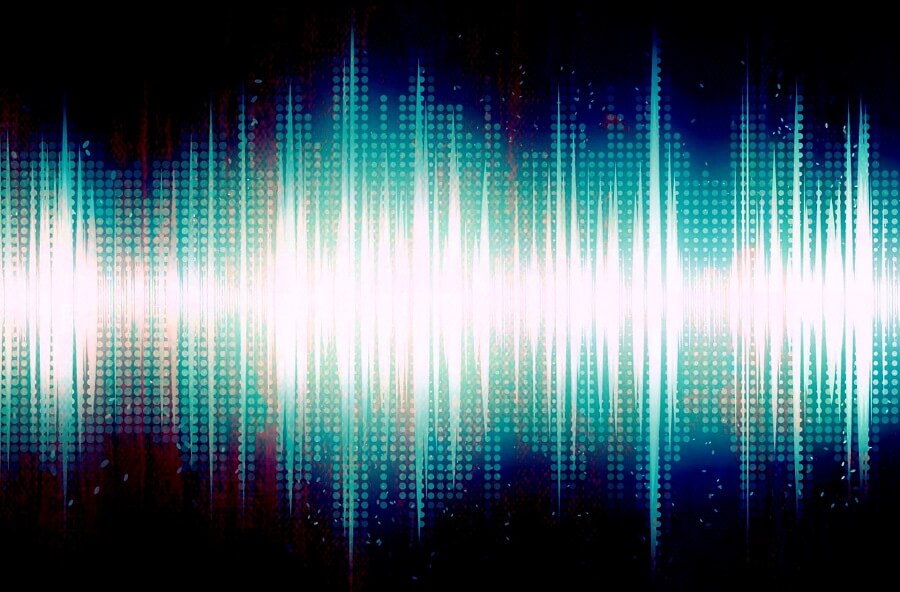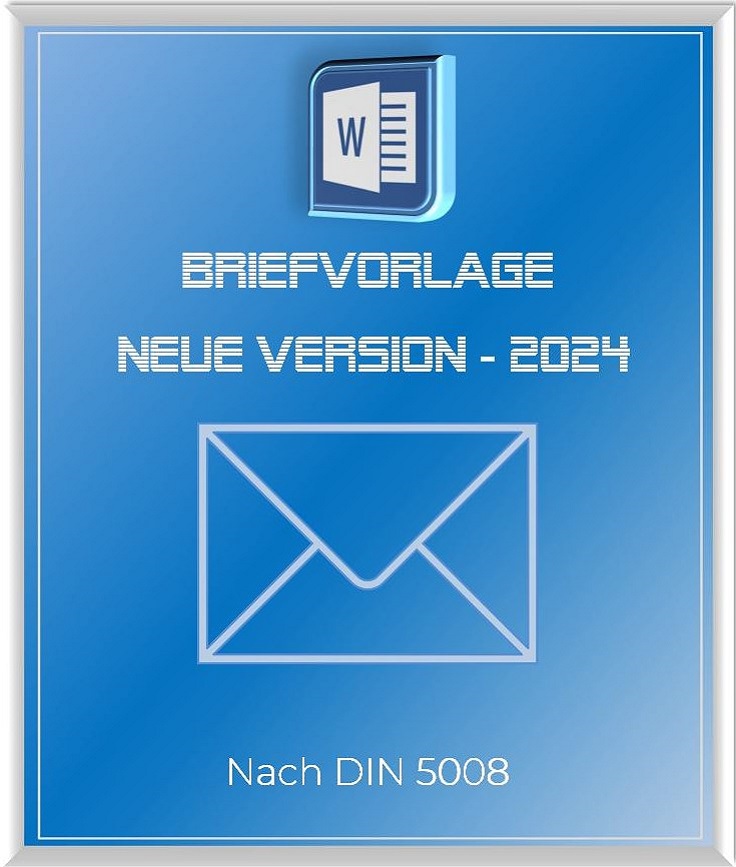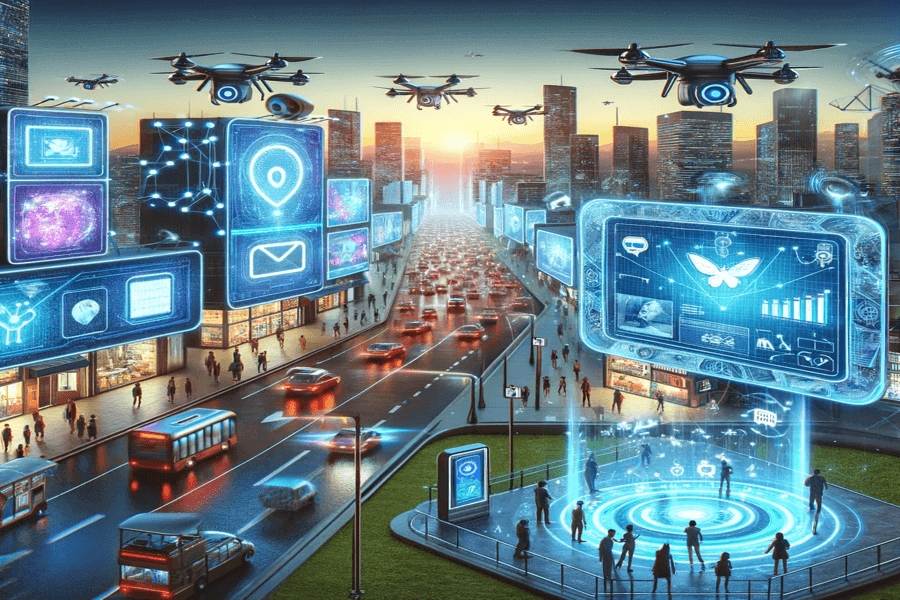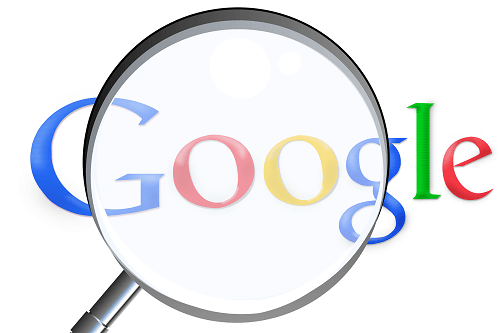Deepfake Audio – The Voice of Artificial Intelligence
In the constantly evolving world of artificial intelligence (AI) Deepfake audio is one of the newest and most fascinating technologies. She has the potential to blur the lines between reality and fiction by mimicking human voices with unprecedented accuracy. While this technology opens up new avenues for creativity and innovation, it also raises serious ethical and security issues.
In this article we will take a deep dive into deepfake audio to understand how this technology works, where it can be applied and what the risks are. Join us on this exciting journey into the world of AI-generated voices.

Deepfake Audio – The Voice of Artificial Intelligence
In the constantly evolving world of artificial intelligence (AI) Deepfake audio is one of the newest and most fascinating technologies. She has the potential to blur the lines between reality and fiction by mimicking human voices with unprecedented accuracy. While this technology opens up new avenues for creativity and innovation, it also raises serious ethical and security issues.
In this article we will take a deep dive into deepfake audio to understand how this technology works, where it can be applied and what the risks are. Join us on this exciting journey into the world of AI-generated voices.

Introduction to Deepfake Audio
Introduction to Deepfake Audio
The voice of the future…
Deepfake audio is a subset of so-called “deepfake” technologies that aim to create realistic media content that shows people in action or say things that never actually happened. Using AI and machine learning, deepfake audio can “clone” a specific person’s voice and make them say things they never said.
- The possibilities presented by this technology are as exciting as they are disturbing. From personalized voice assistants that speak in the voice of your favorite person to new forms of creative expression like creating songs in the voices of deceased musicians, the uses are almost endless.
At the same time, however, deepfake audio also poses serious risks. The ability to clone someone’s voice and have them say things they never said opens the door to abuse, from disinformation and fake news to identity theft and fraud, which we’ll explore in more detail later.
The voice of the future…
Deepfake audio is a subset of so-called “deepfake” technologies that aim to create realistic media content that shows people in action or say things that never actually happened. Using AI and machine learning, deepfake audio can “clone” a specific person’s voice and make them say things they never said.
- The possibilities presented by this technology are as exciting as they are disturbing. From personalized voice assistants that speak in the voice of your favorite person to new forms of creative expression like creating songs in the voices of deceased musicians, the uses are almost endless.
At the same time, however, deepfake audio also poses serious risks. The ability to clone someone’s voice and have them say things they never said opens the door to abuse, from disinformation and fake news to identity theft and fraud, which we’ll explore in more detail later.
How deepfake audio works
How deepfake audio works
Deepfake Audion has the potential to blur the lines between reality and fiction by mimicking human voices with unprecedented accuracy. But how exactly does this technology work? What’s under the hood of deepfake audio?
- The role of machine learning
At the heart of deepfake audio is machine learning, a sub-discipline of AI that allows machines to learn from data and make predictions or decisions without being explicitly programmed. Deepfake audio technologies use special types of machine learning models, known as neural networks.
- Neural Networks and Deep Learning
Inspired by the structure of the human brain, neural networks are made up of interconnected nodes or “neurons” that process data. They are particularly good at detecting and learning patterns in data. Deep learning is a technique that uses deep (i.e. many layers of) neural networks to learn complex patterns in large amounts of data.
- Training the model
To create a deepfake audio model, a neural network is trained on a large amount of speech data. The model learns to recognize the unique characteristics of a person’s voice, including pitch, intonation, and speech patterns. This process can take several hours or even days and consumes enormous amounts of computing power, depending on the size of the training data and the complexity of the model.
- Generation of deepfake audio
Once the model is trained, it can be used to generate new audio files. For example, it takes text input and creates an audio file that sounds as if the person the model was trained on is speaking the text. This process is also known as text-to-speech synthesis.
Deepfake Audion has the potential to blur the lines between reality and fiction by mimicking human voices with unprecedented accuracy. But how exactly does this technology work? What’s under the hood of deepfake audio?
- The role of machine learning
At the heart of deepfake audio is machine learning, a sub-discipline of AI that allows machines to learn from data and make predictions or decisions without being explicitly programmed. Deepfake audio technologies use special types of machine learning models, known as neural networks.
- Neural Networks and Deep Learning
Inspired by the structure of the human brain, neural networks are made up of interconnected nodes or “neurons” that process data. They are particularly good at detecting and learning patterns in data. Deep learning is a technique that uses deep (i.e. many layers of) neural networks to learn complex patterns in large amounts of data.
- Training the model
To create a deepfake audio model, a neural network is trained on a large amount of speech data. The model learns to recognize the unique characteristics of a person’s voice, including pitch, intonation, and speech patterns. This process can take several hours or even days and consumes enormous amounts of computing power, depending on the size of the training data and the complexity of the model.
- Generation of deepfake audio
Once the model is trained, it can be used to generate new audio files. For example, it takes text input and creates an audio file that sounds as if the person the model was trained on is speaking the text. This process is also known as text-to-speech synthesis.
The negative sides of deepfake audio
The negative sides of deepfake audio
Any technology is only as good as what people make of it. Let’s take nuclear power as an example: This was not researched and developed to cause as much damage as possible, but to generate energy for mankind. And the same applies to the generation of language by AI systems. But since you can’t hide that, we have summarized some negative examples:
1. Disinformation and Fake News
One of the most worrying examples of deepfake audio abuse is the spread of disinformation and fake news. At a time when “alternative facts” and “fake news” are already a serious problem, deepfake audio could exacerbate the situation. Imagine a convincing audio deepfake of a political figure being published, making controversial statements or revealing classified information. Such fake audio files could be used to promote political agendas, manipulate public opinion, or even influence elections. By the way, this has all happened a number of times!
2. Identity Theft and Fraud
Another serious risk of deepfake audio is identity theft. Given enough voice samples, a scammer could clone a person’s voice and use it to make fraudulent calls or bypass voice authentication systems. There have already been reports of cases where deepfake audio has been used for fraud. In one case, a CEO was tricked into transferring $243,000 after receiving a call from a scammer impersonating the voice of the parent company boss.
3. Violation of privacy and personal rights
Deepfake audio can also be used to violate the privacy and personal rights of individuals. The ability to clone a person’s voice and make them say things they never said could be used to tarnish their reputation, create embarrassment, or reveal personal information.
4. Increase in skepticism towards authentic recordings
Another potential problem with deepfake audio is that it could undermine trust in authentic audio recordings. If deepfakes become ubiquitous, people might start distrusting even authentic recordings. This could have serious implications for areas such as journalism, law and politics, where audio recordings are often used as evidence.
5. Abuse in cyberbullying and harassment
Besides, deepfake audio could also be abused in cases of cyberbullying and harassment. Criminals could clone their victims’ voices and use them to create embarrassing or harmful content. This could have serious psychological effects on victims, undermining their ability to feel safe and secure in digital spaces.
It is clear that we need both technical and legal solutions to minimize the risks of deepfake audio and to maximize the potential of this technology. This will be one of the great challenges of the coming years!
Any technology is only as good as what people make of it. Let’s take nuclear power as an example: This was not researched and developed to cause as much damage as possible, but to generate energy for mankind. And the same applies to the generation of language by AI systems. But since you can’t hide that, we have summarized some negative examples:
1. Disinformation and Fake News
One of the most worrying examples of deepfake audio abuse is the spread of disinformation and fake news. At a time when “alternative facts” and “fake news” are already a serious problem, deepfake audio could exacerbate the situation. Imagine a convincing audio deepfake of a political figure being published, making controversial statements or revealing classified information. Such fake audio files could be used to promote political agendas, manipulate public opinion, or even influence elections. By the way, this has all happened a number of times!
2. Identity Theft and Fraud
Another serious risk of deepfake audio is identity theft. Given enough voice samples, a scammer could clone a person’s voice and use it to make fraudulent calls or bypass voice authentication systems. There have already been reports of cases where deepfake audio has been used for fraud. In one case, a CEO was tricked into transferring $243,000 after receiving a call from a scammer impersonating the voice of the parent company boss.
3. Violation of privacy and personal rights
Deepfake audio can also be used to violate the privacy and personal rights of individuals. The ability to clone a person’s voice and make them say things they never said could be used to tarnish their reputation, create embarrassment, or reveal personal information.
4. Increase in skepticism towards authentic recordings
Another potential problem with deepfake audio is that it could undermine trust in authentic audio recordings. If deepfakes become ubiquitous, people might start distrusting even authentic recordings. This could have serious implications for areas such as journalism, law and politics, where audio recordings are often used as evidence.
5. Abuse in cyberbullying and harassment
Besides, deepfake audio could also be abused in cases of cyberbullying and harassment. Criminals could clone their victims’ voices and use them to create embarrassing or harmful content. This could have serious psychological effects on victims, undermining their ability to feel safe and secure in digital spaces.
It is clear that we need both technical and legal solutions to minimize the risks of deepfake audio and to maximize the potential of this technology. This will be one of the great challenges of the coming years!
Application areas of deepfake audio
Application areas of deepfake audio
While the technology is often discussed in the media for its potential abuse risks, there are also a number of positive uses that have the potential to enrich and improve our lives.
1. Personalized Voice Assistants
One of the most exciting uses of deepfake audio is the ability to create personalized voice assistants. Imagine being able to talk to a digital assistant that sounds just like your favorite actor or singer. Or maybe you want your assistant to have the voice of a deceased loved one to provide a connection to the past. With deepfake audio, this could become a reality.
2. Improving accessibility
Deepfake audio also has the potential to increase accessibility for people with speech disabilities. For example, someone who has lost their voice could use an artificial version of their own voice to communicate. This could make an enormous difference for people who have trouble expressing themselves verbally.
3. Entertainment and Media
In the entertainment and media industries, deepfake audios could be used to create realistic dialogue for movies or video games without the actors having to be physically present. They could also be used to create music in a specific singer’s voice, even if that singer is dead or unable to sing.
4. Education and Training
In the education and training industry, deepfake audios could be used to create interactive learning materials. For example, history teachers could use recordings of historical figures to make their lessons more lively and memorable.
5. Customer Service
In customer service, companies could use deepfake audio to enable personalized and human-like interactions without the need for a human agent to be present. This could improve efficiency while maintaining a high level of customer satisfaction.
While it is important to recognize and address the potential risks and threats of abuse of deepfake audio, it is equally important to recognize and explore the positive areas of application.
“Technology is not fundamentally bad, it always depends on how you use it. With responsible use and proper security measures, deepfake audio could be a valuable technology that has applications in many areas of our lives.”
While the technology is often discussed in the media for its potential abuse risks, there are also a number of positive uses that have the potential to enrich and improve our lives.
1. Personalized Voice Assistants
One of the most exciting uses of deepfake audio is the ability to create personalized voice assistants. Imagine being able to talk to a digital assistant that sounds just like your favorite actor or singer. Or maybe you want your assistant to have the voice of a deceased loved one to provide a connection to the past. With deepfake audio, this could become a reality.
2. Improving accessibility
Deepfake audio also has the potential to increase accessibility for people with speech disabilities. For example, someone who has lost their voice could use an artificial version of their own voice to communicate. This could make an enormous difference for people who have trouble expressing themselves verbally.
3. Entertainment and Media
In the entertainment and media industries, deepfake audios could be used to create realistic dialogue for movies or video games without the actors having to be physically present. They could also be used to create music in a specific singer’s voice, even if that singer is dead or unable to sing.
4. Education and Training
In the education and training industry, deepfake audios could be used to create interactive learning materials. For example, history teachers could use recordings of historical figures to make their lessons more lively and memorable.
5. Customer Service
In customer service, companies could use deepfake audio to enable personalized and human-like interactions without the need for a human agent to be present. This could improve efficiency while maintaining a high level of customer satisfaction.
While it is important to recognize and address the potential risks and threats of abuse of deepfake audio, it is equally important to recognize and explore the positive areas of application.
“Technology is not fundamentally bad, it always depends on how you use it. With responsible use and proper security measures, deepfake audio could be a valuable technology that has applications in many areas of our lives.”
Examples of deepfake audio
Examples of deepfake audio
In the world of artificial intelligence (AI) and machine learning (ML), deepfake audio has taken the stage and revolutionized the way we think about speech synthesis. By mimicking human voices with unprecedented accuracy, this technology has the potential to transform both the entertainment industry and communications technology. Here are some examples of deepfake audio technologies ushering in this new era.
1. Google’s Tacotron 2
Google’s Tacotron is an end-to-end text-to-speech system that takes text directly into human-like language. It uses deep learning to capture and reproduce the nuances and intonations of human speech, resulting in amazingly realistic speech synthesis.
2. Lyrebird
Lyrebird, a company acquired by Descript, provides an API for creation of digital voices. With just a minute of recorded speech, Lyrebird can create a unique digital voice that mimics the nuances and intonations of the original voice.
3. OpenAI’s Jukebox
OpenAI’s Jukebox is a neural network that can generate music in different genres and styles. It can even mimic certain singers’ voices. Jukebox shows the potential of deepfake audio in the music industry, where it could be used for creating new songs or restoring old recordings.
4. Descript’s Overdub
Descript’s Overdub allows users to clone their own voice and generate text in their own voice. This tool could be revolutionary for podcasting, audio book creation or any other application where personalized speech synthesis is useful.
5. Resemble AI
Resemble AI provides a platform for creating custom AI voices. It can be used to create realistic speech synthesis for various applications, from video games to virtual assistants.
These examples of deepfake audio technologies show the enormous potential of this technology. They open up new possibilities for creativity and innovation, but also raise serious ethical and safety issues. It is clear that we are at the dawn of a new era in speech synthesis and it will be exciting to see where this technology takes us.
In the world of artificial intelligence (AI) and machine learning (ML), deepfake audio has taken the stage and revolutionized the way we think about speech synthesis. By mimicking human voices with unprecedented accuracy, this technology has the potential to transform both the entertainment industry and communications technology. Here are some examples of deepfake audio technologies ushering in this new era.
1. Google’s Tacotron 2
Google’s Tacotron is an end-to-end text-to-speech system that takes text directly into human-like language. It uses deep learning to capture and reproduce the nuances and intonations of human speech, resulting in amazingly realistic speech synthesis.
2. Lyrebird
Lyrebird, a company acquired by Descript, provides an API for creation of digital voices. With just a minute of recorded speech, Lyrebird can create a unique digital voice that mimics the nuances and intonations of the original voice.
3. OpenAI’s Jukebox
OpenAI’s Jukebox is a neural network that can generate music in different genres and styles. It can even mimic certain singers’ voices. Jukebox shows the potential of deepfake audio in the music industry, where it could be used for creating new songs or restoring old recordings.
4. Descript’s Overdub
Descript’s Overdub allows users to clone their own voice and generate text in their own voice. This tool could be revolutionary for podcasting, audio book creation or any other application where personalized speech synthesis is useful.
5. Resemble AI
Resemble AI provides a platform for creating custom AI voices. It can be used to create realistic speech synthesis for various applications, from video games to virtual assistants.
These examples of deepfake audio technologies show the enormous potential of this technology. They open up new possibilities for creativity and innovation, but also raise serious ethical and safety issues. It is clear that we are at the dawn of a new era in speech synthesis and it will be exciting to see where this technology takes us.
Popular Posts
Integrate and use ChatGPT in Excel – is that possible?
ChatGPT is more than just a simple chatbot. Learn how it can revolutionize how you work with Excel by translating formulas, creating VBA macros, and even promising future integration with Office.
A turning point in EU policy on regulating AI
The EU's AI Act represents a historic step forward in the regulation of artificial intelligence. With strict guidelines for high-risk applications, it paves the way for safe and responsible AI innovation on a global scale.
The most important cookie settings in Google Chrome
Find out all about the latest cookie settings in Google Chrome. From third-party cookie blocking to SameSite attributes, we cover the most important updates for your online security and privacy.
QR code scams and how to protect yourself
Cybercriminals use fake QR codes to link to malicious websites or distribute malware. Protect yourself by checking the source, using previews and keeping your smartphone up to date. Be vigilant and enjoy digital conveniences safely.
Start Windows without password – How it works
Starting Windows without a password can be useful if your computer is protected from unauthorized access at home. There is no need to change your password either.
The best backup solutions for your data
Keep your data safe and secure! Discover our best backup solutions for your valuable information now. Because safety is the be-all and end-all - and we have the perfect tips.
Popular Posts
Integrate and use ChatGPT in Excel – is that possible?
ChatGPT is more than just a simple chatbot. Learn how it can revolutionize how you work with Excel by translating formulas, creating VBA macros, and even promising future integration with Office.
A turning point in EU policy on regulating AI
The EU's AI Act represents a historic step forward in the regulation of artificial intelligence. With strict guidelines for high-risk applications, it paves the way for safe and responsible AI innovation on a global scale.
The most important cookie settings in Google Chrome
Find out all about the latest cookie settings in Google Chrome. From third-party cookie blocking to SameSite attributes, we cover the most important updates for your online security and privacy.
QR code scams and how to protect yourself
Cybercriminals use fake QR codes to link to malicious websites or distribute malware. Protect yourself by checking the source, using previews and keeping your smartphone up to date. Be vigilant and enjoy digital conveniences safely.
Start Windows without password – How it works
Starting Windows without a password can be useful if your computer is protected from unauthorized access at home. There is no need to change your password either.
The best backup solutions for your data
Keep your data safe and secure! Discover our best backup solutions for your valuable information now. Because safety is the be-all and end-all - and we have the perfect tips.













































